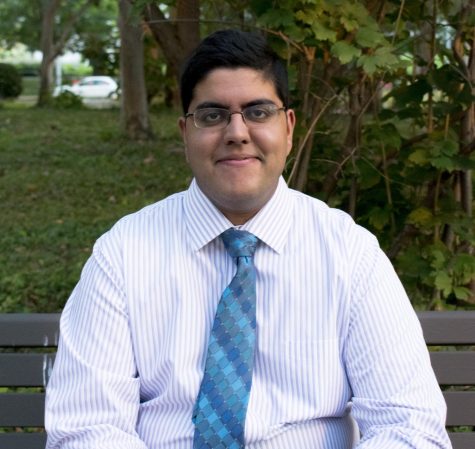A drug as a tool
Spotlight on Research
A traveler of the world, Dr. Youwei Zhang studied pharmacology in China, then Japan and finally the United States. As a child, he grew up in the countryside and was ripe with curiosity. He remembers that exploring the world was one of his favorite pastimes. It taught him how to confront a new environment and embrace it. In all this, however, Zhang remains an admirer of pharmacology, the subject of his study.
Recently, Zhang and a group of researchers discovered a method to increase cancerous cells’ use of a fast, inaccurate method to repair DNA, versus a slow, accurate one to make them more susceptible to chemotherapy. The researchers found a gene that was affiliated with the slow method and regulated the production of the protein that controls the rapid, faulty method of DNA repair. The finding is significant because an overabundance of the protein in cancer cells would cause them to be susceptible to chemotherapy or even die on their own.
Zhang began his quest to find a gene that deals with cellular function and regulation in relation to cancerous cells. As he puts it, they were looking for “players.” He had a list of candidates but needed a way to narrow it down.
Zhang used a much-valued research tool, the RNA interference (RNAi). In this, researchers take advantage of a natural gene suppression mechanism used in cells. The RNAi binds to a different type of RNA, mRNA, that delivers the information needed to make a protein and destroy it. The RNAi is able to bind to a specific messenger due to its distinct makeup being complementary to a unique mRNA. By removing the messenger, investigators can easily stop genes from carrying out their work.
“If that protein is important for a particular mechanism or signaling pathway, then you have a functional defect,” Zhang said.
The group went down the list to identify genes that would create a difference in the cells. However, the researchers knew it was difficult to notice variations in cells that may not even be visible. Instead, they used a drug with a known effect on the cells.
They gave it to normal cells and altered cells that contained the gene that was RNAi inhibited. If the cells didn’t respond as expected, then the gene’s inhibition had significantly altered the cell’s functioning.
“In a dance performance you may have a lead,” Zhang explained. “If that lead is sick on the day of the performance, then the performance can’t happen.”
It’s the clever use of drugs that interests Zhang. In fact, he emphasized that, unlike popular thought, pharmacology is not simply just the development of drugs. To him, pharmacology is a tool that helps health professionals study the human body.
“When you want to study disease of molecular mechanisms, you need to have a tool. One of them is pharmacological drugs,” he said.
When he’s not doing research, Zhang enjoys table tennis. He has played competitively and was the faculty moderator of the club at Case Western Reserve University..

Kushagra Gupta is a cognitive science and biology student and is working towards a masters in medical physiology. He's served as The Observer’s The Director...


